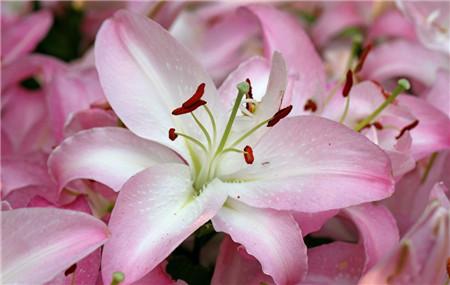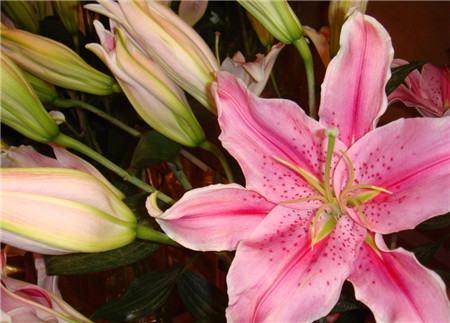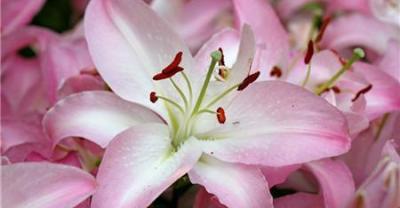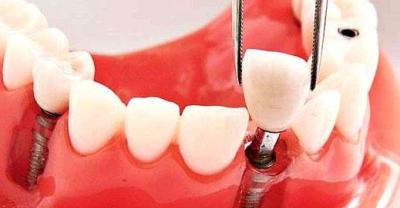Planting method and Propagation of Flowers-Lily
Lily, has always been known as "cloud clothes fairy", white flowers, beautiful posture, raise a pot of beautiful lilies, must be very proud. So, only in this way can we raise the lilies well, and how to raise the lilies?

Growth habits of Lilium nigrum
Lily is a plant that likes to be cool. It is hardy and will not grow well in high temperature areas. Like dry and afraid of moisture, the soil should not be too wet, otherwise it will lead to plant death. The growth of lilies is not strict with the soil, but the fertile and loose sandy soil is better and more fertilizer-tolerant.
The culture mode of lilies
Lilies can be potted, the bulbs will be planted in the soil, do a good job of daily maintenance, will produce beautiful flowers. In addition, lilies can also be raised in water, and even if they are cultured in water, they also have a different taste.
The Culture method of Lilium
Temperature and light
Lilies grow best at 12: 18 ℃, but lilies are also hardy and will not freeze to death when the temperature is 3: 5 ℃. The optimum temperature for flowering is 16: 24 ℃.
As the lily has the characteristics of light and humidity, lack of artificial light, too much shade will affect the flowering of lilies. However, a little shading is beneficial to the growth of lilies.
Water and fertilizer management
Lily requirements for water and fertilizer is not high, watering should not be excessive, on weekdays to keep the soil moist, you can spray water to lilies, improve air humidity, 60% to 80% is better. And the amount of fertilizer applied to lilies is not large, it can be fertilized once every half a month, and topdressing is needed at flowering stage to promote flowering. There is a great demand for nitrogen and potash fertilizer and relatively little demand for phosphate fertilizer.

Mode of reproduction
The propagation methods of lilies mainly include sowing, bulblet division, scale cutting and bud division.
Sowing and reproduction are mainly harvested in autumn and then sown in the spring of the following year. The period of cultivation is relatively long, and this method is not often used in general family farming.
The method of dividing small bulbs is mainly to separate some small bulbs from the old bulbs of lilies in September, and then plant them in pots at the beginning of the second year, which is more suitable for family breeding of lilies.
Scale cuttings break the scales off the old bulbs of lilies and use them for cuttings. this way of propagation can reproduce a large number. After a period of cultivation, the scales grow into small bulbs and can be planted in the spring.
The reproduction method of bead bud method is only suitable for a few species. The method is to take down and culture the bulbs formed in the axils of the aboveground stems and leaves of lilies. It can be planted when it grows into a large bulb, and it can blossom in 2 to 4 years.

Matters needing attention in the culture of lilies
Basin soil selection
The roots of lilies are well developed, so when choosing flowerpots, we should choose larger and deeper flowerpots, put rotten leaf soil, sand, garden soil and other mixed soil, and apply some basic fertilizer. In addition, as lilies grow, it is best to change pots once a year and replace them with new soil and fertilizer.
Pest control
There are several common diseases in lilies, including lily mosaic disease, spot disease, bulb rot, leaf blight and so on. Aphids, ground tigers, ants, mole crickets eat seedlings (stems), nematodes, earthworms and other pests damage underground bulbs and bulb plates, resulting in the death of lily plants.
Pay attention to culture
The lilies should be soaked in 2ml silver thiosulfate solution before planting, and the potted lilies could be stored for 14 days at 3 ℃.
The lily is required to turn the flowerpot once a week to prevent the plant from being too long and affect the ornamental.
After the lily blossoms, the bulb still has the ability to regenerate. The residual leaves can be cut off, the bulb can be dug out and buried in sand, and then replanted the next year, it is possible to blossom again.
- Prev

Key points and matters needing attention in planting saffron
Nicknames for saffron-saffron, saffron. Origin: originally from southern Europe, Italy and the Mediterranean coast. Now it is mainly distributed in Spain and France.
- Next

Cyclamen Flower language and planting History
Cyclamen flowers with rich fragrance, beautiful leaves, chic flowers and colorful flowers, cyclamen flowers are grown in many countries. The flower language of cyclamen is also popular.
Related
- Fuxing push coffee new agricultural production and marketing class: lack of small-scale processing plants
- Jujube rice field leisure farm deep ploughing Yilan for five years to create a space for organic food and play
- Nongyu Farm-A trial of organic papaya for brave women with advanced technology
- Four points for attention in the prevention and control of diseases and insect pests of edible fungi
- How to add nutrient solution to Edible Fungi
- Is there any good way to control edible fungus mites?
- Open Inoculation Technology of Edible Fungi
- Is there any clever way to use fertilizer for edible fungus in winter?
- What agents are used to kill the pathogens of edible fungi in the mushroom shed?
- Rapid drying of Edible Fungi

